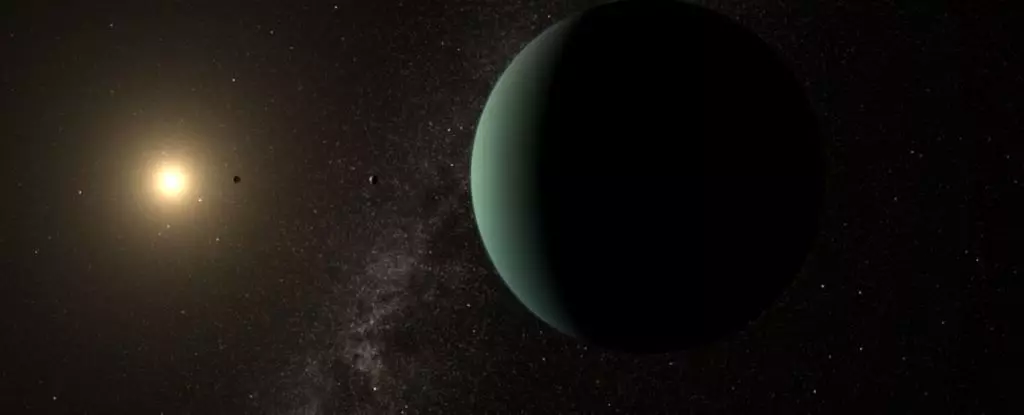The quest for extraterrestrial life has been an enduring pursuit among astronomers and scientists alike. The discovery of exoplanets, particularly those located within habitable zones, has significantly shaped our understanding of the universe. Among the latest revelations is the existence of HD 20794 d, an exoplanet that may harbor key elements necessary for life. Positioned a mere 20 light-years from our Solar System, this planet has emerged as a focal point for researchers contemplating the existence of life beyond Earth.
To grasp the implications of finding HD 20794 d, it is crucial to understand the concept of the habitable zone—an orbital range where conditions are just right for liquid water to exist. Water is a fundamental ingredient for life as we know it, and its presence in liquid form elevates the possibility of biological existence. For an exoplanet to be considered habitable, it typically needs to orbit its star at a distance that allows for this precious resource to remain fluid rather than evaporate or freeze.
Located around a yellow dwarf star akin to our Sun, HD 20794 d lies within the habitable zone where temperatures could potentially allow liquid water to flow. However, this ideal distance alone does not guarantee habitability. Conditions such as atmospheric composition, surface pressure, and geological activity also play pivotal roles, creating a complex matrix that defines a planet’s habitability.
Initial studies suggested that HD 20794 d has a mass nearly six times that of Earth. Detailed assessments, however, revealed that its potential radius varies, suggesting it could either be a rocky super-Earth or a mini-Neptune with a thicker gaseous envelope. This distinction is crucial; while a rocky composition often supports terrestrial life, a gaseous planet may not.
The exoplanet’s orbit takes approximately 648 days to complete a revolution around its star. Despite this extended period, caution is warranted as its orbit is elliptical, meaning it periodically ventures outside the habitable zone. At its farthest point from the star, conditions could plummet to sub-zero temperatures, solidifying any water present. Thus, while HD 20794 d is tantalizingly close to being a second Earth, its habitability remains fraught with uncertainty.
The journey to uncover the secrets of HD 20794 d illustrates the intricate tapestry of modern astronomical research. The path began with a mysterious signal detected in 2011 from the star HD 20794. Yet, it wasn’t until 2022 that astrophysicist Michael Cretignier and his team were able to confirm its existence through meticulous analysis. They tracked a faint wobble in the star’s spectrum—indicative of an exoplanet’s gravitational influence—and proceeded to gather more data using advanced tools like the European Southern Observatory’s ESPRESSO instrument.
This verification process, fraught with challenges, underscores the complexity of exoplanet detection. Confirmation is often not a straightforward task; faint signals at the edge of detection thresholds necessitate further observations and rigorous scrutiny to evade false positives. The successful identification of HD 20794 d is a testament to the dedication and innovation driving modern astrophysics.
Although the discovery of HD 20794 d is exhilarating, a vast expanse of unknowns still looms over our understanding of this celestial body. As researchers continue to analyze its physical parameters and atmospheric conditions, future exploration missions are on the horizon. The relative proximity of HD 20794 d presents unique opportunities; robotic missions or advanced telescopic technology could potentially image the exoplanet, yielding invaluable data on its surface conditions and composition.
The implications of finding a habitable planet so close to our Solar System can redefine our notions of life beyond Earth. It emphasizes that the cosmos is filled with possibilities for existing life forms, challenging our understanding of life’s range and adaptability during various climatic conditions.
HD 20794 d serves as a beacon in the ongoing quest to understand our universe’s potential for life. Although its habitability remains uncertain, discoveries like this invigorate the scientific community and encourage further explorations. As our techniques improve and our knowledge expands, the dream of uncovering other worlds capable of supporting life might just be within reach.


Leave a Reply